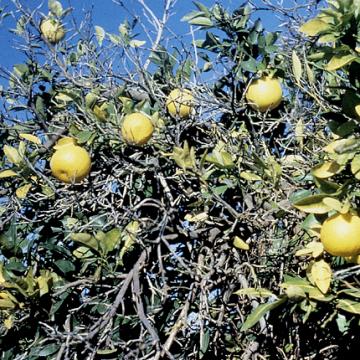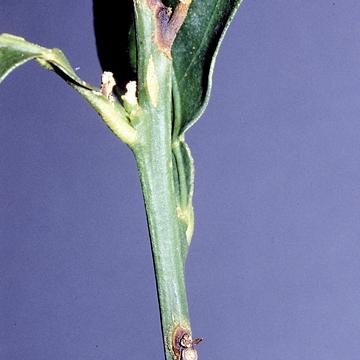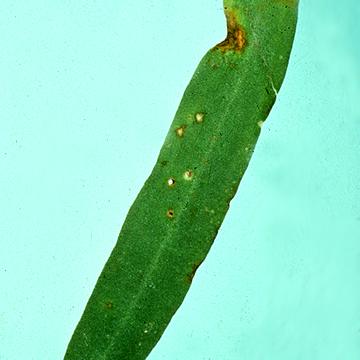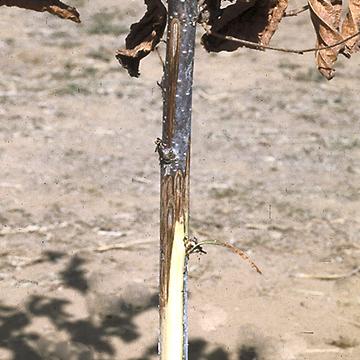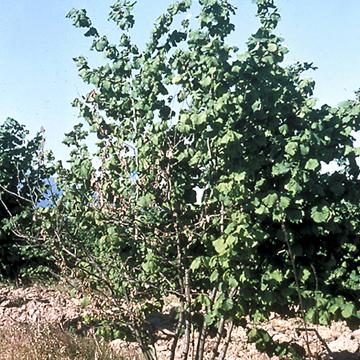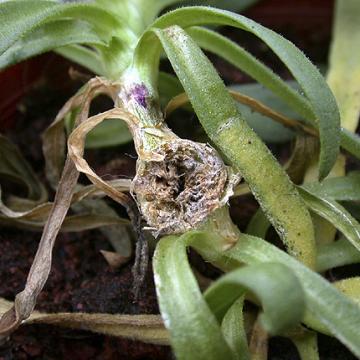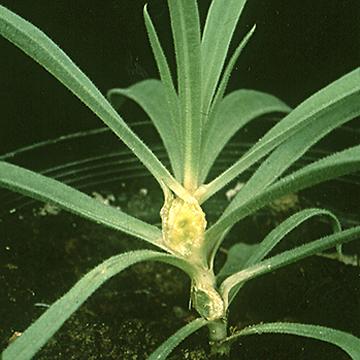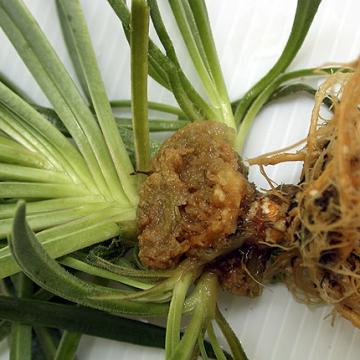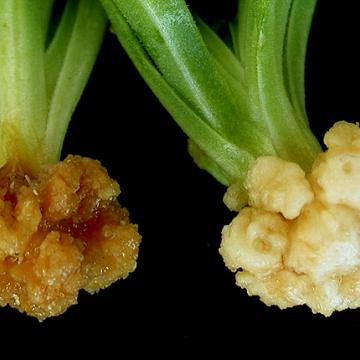DISEASE: Australian citrus dieback
HOST: Citrus (Lime)
Severe decline, a late stage of disease. The disease spreads slowly in mature trees, progressing faster in young trees.
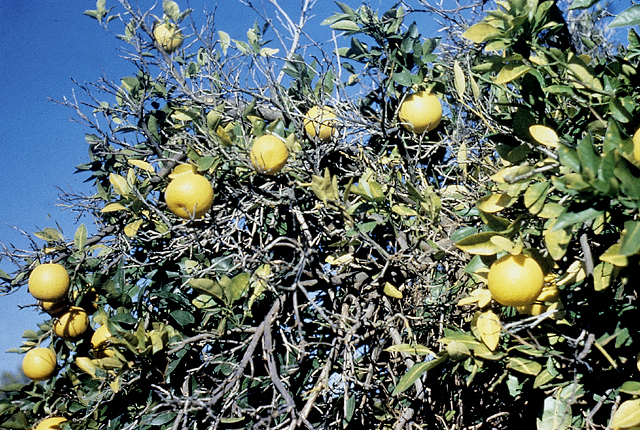
Australian citrus dieback | Citrus (Lime)
DISEASE: Australian citrus dieback
HOST: Citrus (Lime) (Citrus sp.)
PATHOGEN: 'Candidatus Phytoplasma australiense'
PATHOGEN SYNONYM: Phytoplasma Stolbur group
SOURCE: P. Broadbent
DISEASE: Bacterial blast and black pit
HOST: Citrus (Lime)
Characteristic symptoms of brownish black lesions on twigs and leaves (blast), starting with infection of petioles. Black pit refers to brown to black sunken spots on fruit, 5 to 20 mm in diameter.
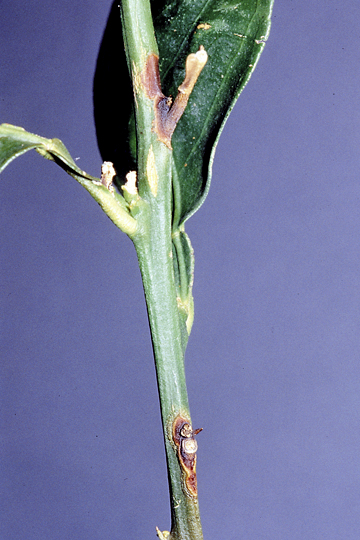
Bacterial blast and black pit | Citrus (Lime)
DISEASE: Bacterial blast and black pit
HOST: Citrus (Lime) (Citrus sp.)
PATHOGEN: Pseudomonas syringae pv. syringae
SOURCE: P. Broadbent
DISEASE: Bacterial blight
HOST: Gypsophila (Baby's breath)
Gypsophila (baby's breath) with light brown, marginal leaf lesions and distortion.
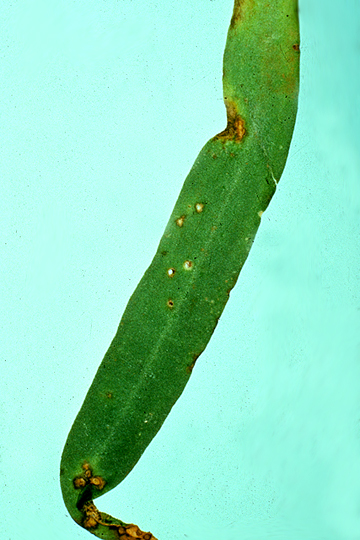
Bacterial blight | Gypsophila (Baby's breath)
DISEASE: Bacterial blight
HOST: Gypsophila (Baby's breath) (Gypsophila paniculata)
PATHOGEN: Burkholderia andropogonis
PATHOGEN SYNONYM: Pseudomonas andropogonis
SOURCE: A. Hayward
DISEASE: Bacterial blight
HOST: Hazelnut
Diseased young tree with discoloration of the cambium. Dieback of young twigs and branches is characteristic. Other typical symptoms are bud and twig necrosis and small, angular or round, water-soaked leaf spots.
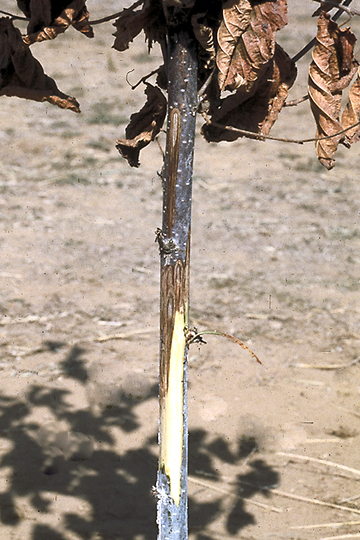
Bacterial blight | Hazelnut
DISEASE: Bacterial blight
HOST: Hazelnut (Corylus americana)
PATHOGEN: Xanthomonas arboricola pv. corylina
SOURCE: J. Pscheidt
DISEASE: Bacterial canker
HOST: Hazelnut
Primary symptoms are failure of buds to break and withering and death of new foliage in spring. Dead leaves remain attached to limbs after normal leaf fall.
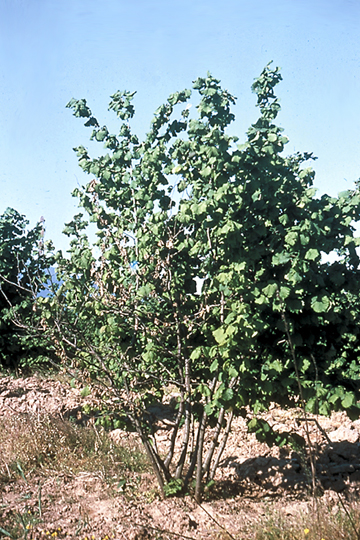
Bacterial canker | Hazelnut
DISEASE: Bacterial canker
HOST: Hazelnut (Corylus americana)
PATHOGEN: Pseudomonas syringae pv. avellanae
PATHOGEN SYNONYM: Pseudomonas avellanae
SOURCE: P. Psalidas
DISEASE: Gypsophila gall
HOST: Gypsophila (Baby's breath)
Gall on gypsophila stem.
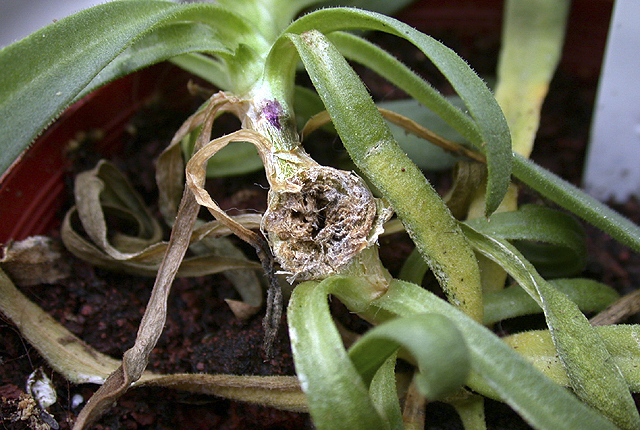
Gypsophila gall | Gypsophila (Baby's breath)
DISEASE: Gypsophila gall
HOST: Gypsophila (Baby's breath) (Gypsophila elegans)
PATHOGEN: Pantoea agglomerans pv. agglomerans
SOURCE: S. Manulis
DISEASE: Gypsophila gall
HOST: Gypsophila (Baby's breath)
Gall 1 month after inoculation of stem.
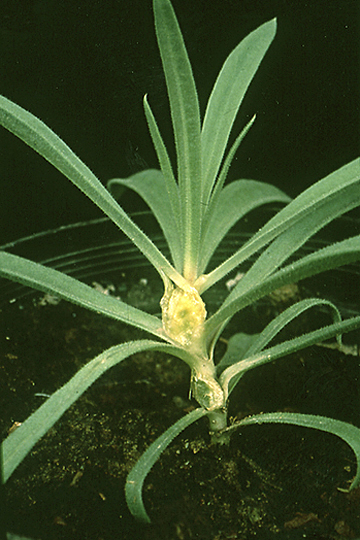
Gypsophila gall | Gypsophila (Baby's breath)
DISEASE: Gypsophila gall
HOST: Gypsophila (Baby's breath) (Gypsophila elegans)
PATHOGEN: Pantoea agglomerans pv. agglomerans
SOURCE: S. Manulis
DISEASE: Gypsophila gall
HOST: Gypsophila (Baby's breath)
Brown gall on crown of gypsophila.
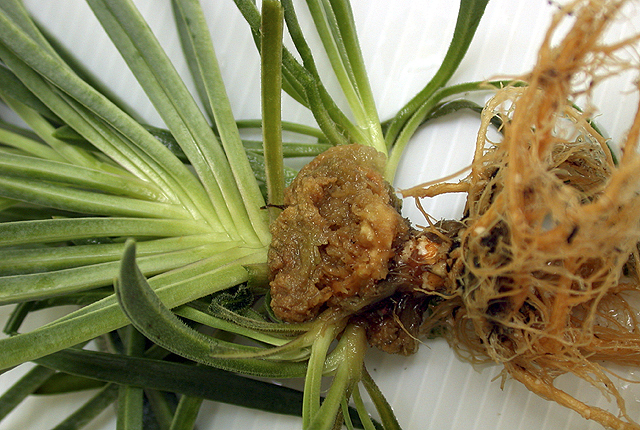
Gypsophila gall | Gypsophila (Baby's breath)
DISEASE: Gypsophila gall
HOST: Gypsophila (Baby's breath) (Gypsophila elegans)
PATHOGEN: Pantoea agglomerans pv. agglomerans
SOURCE: S. Manulis
DISEASE: Gypsophila gall
HOST: Gypsophila (Baby's breath)
Galls (left) caused by Pantoea agglomerans pv. agglomerans tend to be brownish, and those (right) caused by P. agglomerans pv. betae are white.
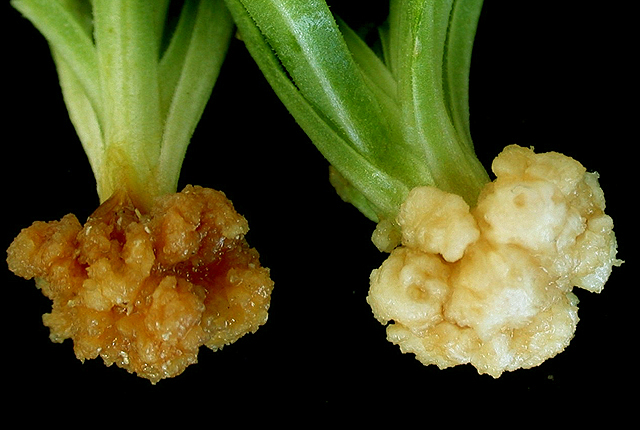
Gypsophila gall | Gypsophila (Baby's breath)
DISEASE: Gypsophila gall
HOST: Gypsophila (Baby's breath) (Gypsophila elegans)
PATHOGEN: Pantoea agglomerans pv. agglomerans
SOURCE: S. Manulis


